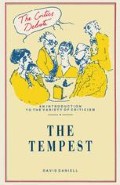Abstract
THE SPECIALNESS OF The Tempest — something like a court masque, but altogether firmer, less evanescent — would have been seen by James I and its first audiences to have been in that very open-ness we are just learning to celebrate again: its meanings both firmly rooted, as in its celebration of royal power in the new plantation in James Town, Virginia; and at the same time free to change shapes at the behest of the royal master: to have, by good magic, freedom in space and time. The Tempest is indeed a play which, though firmly established in the very front of the 1623 Folio, has continued a free life, successively turning into new shapes of great interest, from Milton’s Cornus to Auden’s The Sea and the Mirror from Fletcher to the late-twentieth-century Caribbean remakings. Other plays have been adapted: only The Tempest lives on in quite this remarkable way.
Preview
Unable to display preview. Download preview PDF.
Copyright information
© 1989 David Daniell
About this chapter
Cite this chapter
Daniell, D. (1989). The courtly Tempest. In: The Tempest. The Critics Debate. Palgrave, London. https://doi.org/10.1007/978-1-349-20229-4_8
Download citation
DOI: https://doi.org/10.1007/978-1-349-20229-4_8
Publisher Name: Palgrave, London
Print ISBN: 978-0-333-45120-5
Online ISBN: 978-1-349-20229-4
eBook Packages: Palgrave Literature & Performing Arts CollectionLiterature, Cultural and Media Studies (R0)

